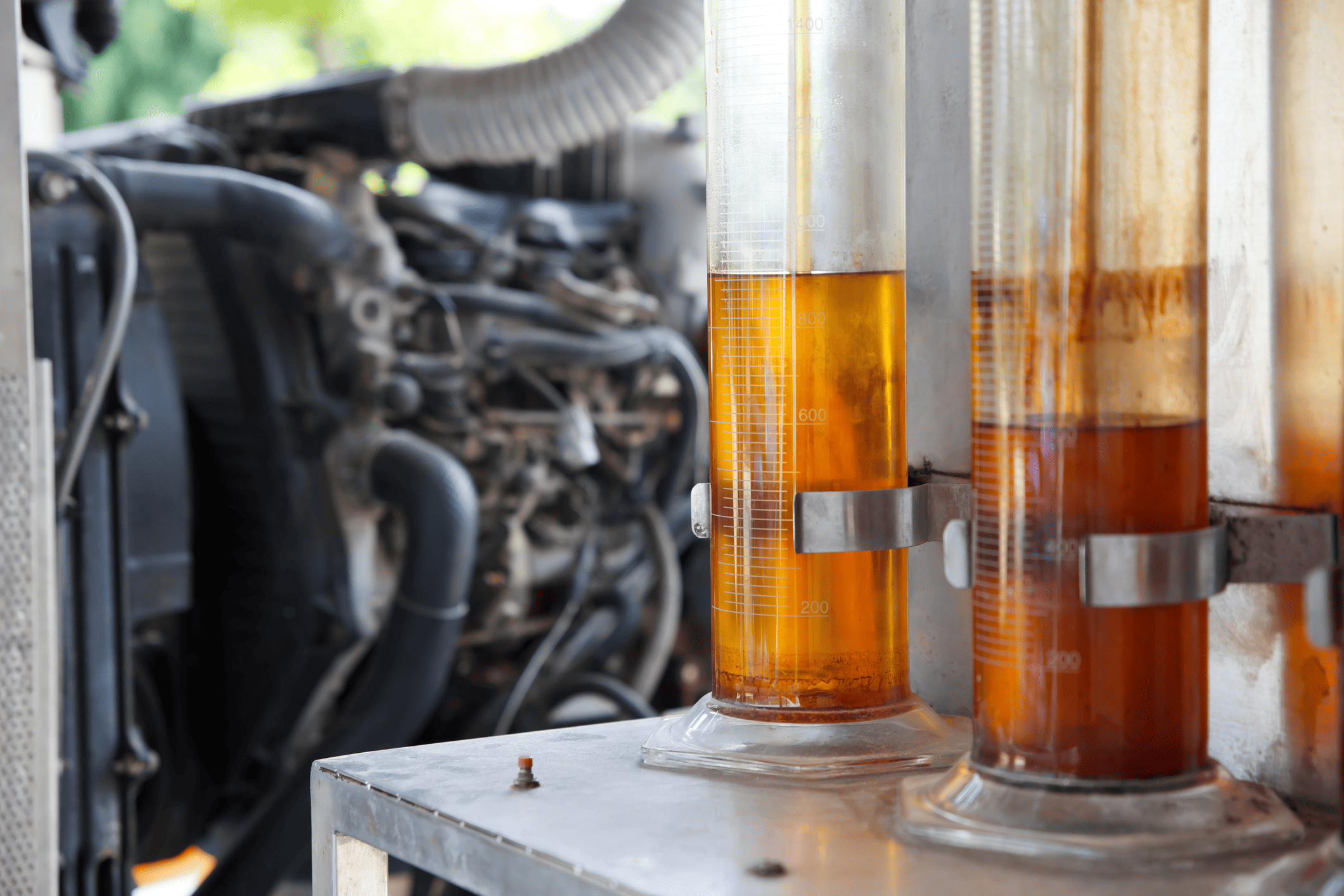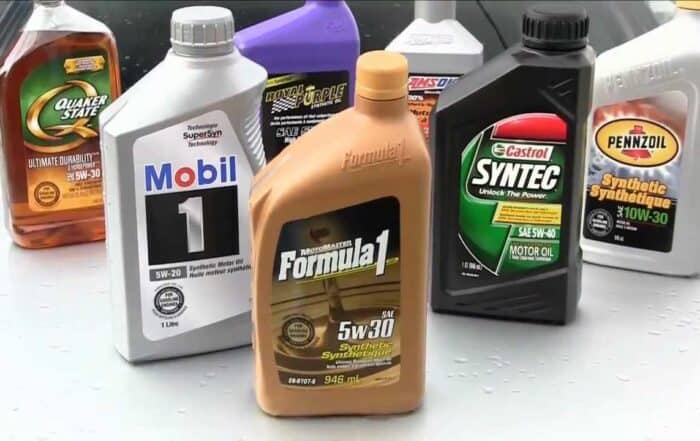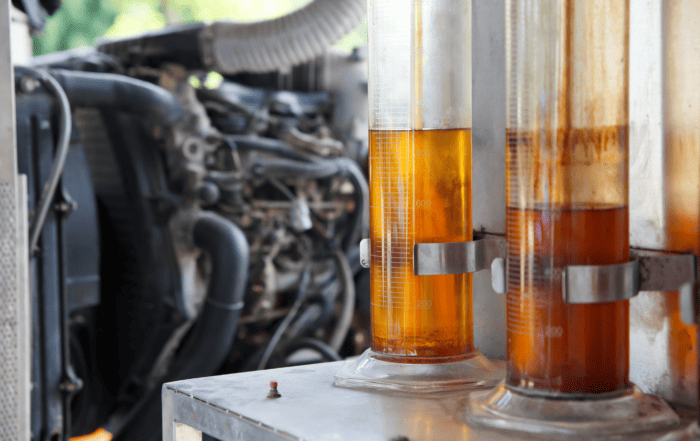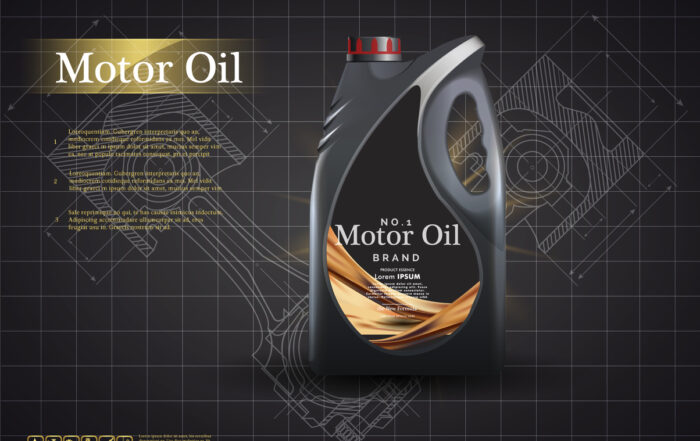Fuel in Diesels
How often is fuel a problem in diesel engines?

For our last newsletter, we did an experiment where we actually tried to get fuel dilution to show up in the oil. Amanda’s Kia was our guinea pig, and she tried hard to get some fuel to show up but had very little success. She tried idling for ten minutes and she tried lots of city driving, but could hardly get anything more than a trace or so. Maybe that’s just a testament to Kia and their fuel system engineering, or maybe she was just unlucky. It’s hard to say. However, fuel dilution does show up for a lot of our customers and after the last newsletter, we received some e-mails asking for more information about fuel, especially in diesel engines with possible fuel dilution problems.
A little history
Diesel engines started showing up in pickup trucks back in the 1980s and while those engines didn’t particularly wear well, fuel dilution wasn’t really a big issue.
In the 1990s, these engines really started coming into their own. Wear metals improved and the oil changes started getting longer and longer. Ford started using the Navistar 7.3L Power Stroke and Dodge used the Cummins 6BT 5.9L, and both were excellent engines. They produced a lot of power and left very little metal in the oil to show for it.
GM used the Detroit Diesel 6.5L, and while that was a good engine and a lot of them are still on the road today, it tended to make a lot more metal than its competitors. It wasn’t until GM started the Isuzu 6.6L Duramax that it really had a world- class diesel that was every bit as good as what Ford and Dodge were using.
With this new generation of engines, we started seeing people run 5,000-mile oil changes regularly, where the old standard was just 3,000 miles. And oil changes have gotten longer and longer since.
These days it’s not uncommon at all to see those engines running 10,000 miles on the oil without any special oil filtration set-up. Of course, a lot of that is dictated by the type of use they see. This was also the carefree days before emission controls starting becoming mandatory.
For some of you, the words emission controls may make you turn away in disgust and I’ll admit, on my own truck engine (a gasoline powered GM 350), the emission controls haven’t gotten the attention the rest of the engine has. But really the idea isn’t really all that bad.
Piston powered aircraft engines don’t have any emission controls on them, but those engines are plagued by rust and corrosion because condensation from the air is allowed to enter through the breather. Modern gasoline and diesel engines don’t have that problem because their crankcases are sealed to the elements and that keeps corrosion to a bare minimum. It’s also one of the reasons you don’t really need to change your oil on a time basis anymore. We get a lot of questions about if an oil will last a year or not and the answer is almost always yes, because very little corrosion builds up on these engines.
Of course, gasoline-powered engines have had emission control systems on them since the 1970s and that means the engine designers have had a lot of time to get it right. When emission controls started appearing on diesel engines in 2005 and 2006, there were a lot of growing pains with that introduction. Couple that with the fact that competition brought about the need for more and more power, and now we started seeing changes in the oil samples, mainly at fuel dilution.
We first started seeing a lot of fuel when Navistar came out with the 6.0L Power Stroke in 2003. Those engines almost always had a lot of fuel in the oil, especially when they were new¾and when I talk about a lot, I mean 4% and 5%.
We weren’t sure exactly what cased this, but it was showing up in almost every sample we saw and this presented a problem for us because we had always considered 2.0% to be an “action” level of fuel. So what do you do when every engine starts showing more than 2.0% fuel? Do you start sending every owner back to the dealer saying there’s a problem? And what do you do if you see a lot of fuel dilution, but wear metals continue to look good?
So the 6.0L Power Stroke caused us to take a different look at fuel and how much of a concern it really is. No longer could we consider 2.0% is a major problem. Now we suggest that it’s only an issue if the oil level is rising on your dipstick, or if the amount of fuel we find in each sample is increasing. As it turns out, continual fuel dilution in the oil at around 2.0% to 3.0% sometimes is from a problem, but it should not be considered a major one and I know about that first-hand.
About my Passat
In 2004 my wife and I bought a Volkswagen Passat with the 1.8L turbo gasoline engine. Almost from the start, this engine was leaving a lot of fuel in the oil and I would look at the analysis results and just shrug my shoulders. The engine was running fine and wear metals were acceptable, but the fuel mileage was never quite a good as advertised. For me, that didn’t seem like a good enough reason to tear into the fuel system.
Shortly after we bought the Passat, Volkswagen set us a letter saying they would extend the engine warranty to 10 years or 100,000 miles due to sludging problems they were having. I suspected these problems stemmed from a lot of fuel dilution in the oil coupled with really long oil runs, but I’m not sure. The kicker for the extend warranty was I had to change oil every 5,000 miles and I had to use a VW-approved oil. Of course, they approved expensive oils like Elf and Total, and those aren’t on my approved list. My list includes oils that are on sale at Wal-Mart, so I decided to stick with my oils and just change the oil at 3,000 miles. So far the plan has worked but if it fails, I’ll be writing about how I rebuilt the engine myself (twice) in my Dad’s barn.
In the end, we haven’t done anything about the continual fuel in our Passat’s oil (except curse VW), but the engine is still running fine and is close to the magic 100,000-mile mark. When we hit 100K, we’ll unload it and get my wife the new car of her dreams (a white Jaguar S-type). So despite the fuel being present in every report, really the only problem this has caused is our MPG isn’t quite what it should be.
Back to diesel engines
So anyway, the fuel dilution problems in the 6.0L Power Stroke eventually got better and those engines now look as good as any we see, so they’ve changed something to solve the fuel problem.
Then came the next generation of diesels (the 6.4L Power Stroke) and the fuel problems started up again. It’s not uncommon to sees excess fuel in over 2% of the small diesel engine samples we see today, and when it shows up that often, it’s hard to say it’s a major issue. It shouldn’t really be there, but it doesn’t necessarily warrant a trip to the dealer either.
The source of the fuel dilution differs from one engine manufacturer to the next, though injectors and emission control systems appear to be the root cause of most of these problems.
For the new 6.4L Power Strokes, if it’s not an injector it could be another part of the fuel system, like a pump. The DPF (diesel particulate filter) regeneration process will also cause fuel to show up in the oil. Does that mean these new engines are junk? Not at all. It just shows they have some growing pains to work out and once that happens, the fuel dilution problems will eventually taper off.
Until then, don’t get too excited 2.0% or more of fuel dilution, but do watch for an increased oil level on your dipstick. While you may think an engine that makes oil is like the goose that laid the golden egg, it’s really a possible sign of problems down the road. Small amounts of fuel are okay, but if the oil level is rising or if we’re seeing more and more fuel in each sample you do, fuel could be a problem.
Related articles
What’s the Best Oil Change Interval?
How do we determine the best oil change?
All About Insolubles
What are they and what causes them to form?
Fuel in Diesels
How often is fuel a problem in diesel engines?
Does Oil Brand Matter?
The right oil may be right in front of you.









